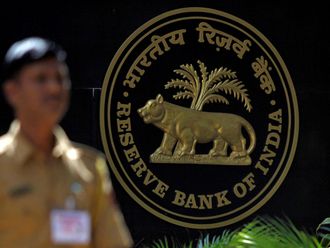
London: Already it has become a legendary piece of advice. One of the world’s greatest investors tells adoring shareholders that when he dies, he will recommend that his widow leaves nine-tenths of the money made from a lifetime of value investing in a fund that tracks the S&P500 index.
“I believe the long-term results from this policy will be superior to those attained by most investors — whether pension funds, institutions or individuals — who employ high-fee managers,” wrote Warren Buffett in his 2014 letter to shareholders.
Passive investing, or index tracking, is on the rise. According to the Investment Management Association, 10 per cent of all retail open-ended fund assets are now index trackers. On top of that come exchange traded funds, which arrived in Europe in 2000.
Wealth managers increasingly use passive strategies. Nutmeg, which offers discretionary portfolio management services, says it prefers exchange traded funds because they are easy to trade, low cost and deliver accurate tracking.
In the institutional world, passive investing is also spreading. One notable example of this is the proposal to switch the UK’s local government pension fund to index tracking investments. The arguments advanced for doing so were those deployed by indexing adherents worldwide: cost and performance.
Many active managers insist that costs are a distraction and that investors should focus on performance after charges. But investors themselves are becoming far more aware of the cost of active management and its impact on long-term returns. “Too often, the industry has charged active fees for passive performance or worse,” said fund manager Neil Woodford on BBC radio recently.
His status as one of the most conspicuously successful UK managers of recent years meant the comments received widespread publicity. But they merely reiterated what academics have long postulated: net of higher costs, active managers do not on average beat the market.
William Sharpe, professor emeritus of finance at Stanford University and creator of the capital asset pricing model, explained why in disarmingly simple (some would say simplistic) terms back in 1991. Investing is a zero-sum game, he reasoned, so active managers who beat the market do so only at the expense of those who do worse. The market return is the average of its participants’ returns, so the average active manager achieves the same return as the passive, before costs. Net of costs, the average result is inevitably poorer.
Others have reached similar conclusions. “The results do not support the existence of skilled or informed mutual fund portfolio managers,” said Mark Carhart, of the University of California, of his research in 1997. “We find that mutual funds underperform the market overall,” noted Miguel Ferreira, professor of finance at Nova School of Business and Economics, and others in 2012. “The aggregate portfolio of actively managed US equity mutual funds is close to the market portfolio, but the high costs of active management show up intact as lower returns to investors,” said US academics Eugene Fama and Kenneth French in 2010.
The differences in costs can be startling. Investors are more aware these days that the widely advertised total expense ratio (or ongoing charges figure) is not all-encompassing. Other expenses, notably trading costs, can easily take the total to 2 per cent or beyond, whereas a big index tracker can be had for a 20th of that. Long-term returns on shares are about 5 per cent a year in real terms, so any manager will have to generate plenty of “alpha” to overcome the drag of his own fees and operating expenses.
Holding for the long term is not necessarily a panacea either, because of the compounding of costs. A study this year by three Vanguard analysts found that even where managers beat the market, the margin of outperformance decreased as time went on — in the case of UK equity funds, from a median 0.84 per cent over five years to 0.32 per cent over 15.
And those figures do not account for “survivorship bias”. The worst-performing funds are often closed, liquidated or merged with others that are doing better. The drag on overall performance is thus lightened. Vanguard’s analysts found that, for global equity funds over 10 years, including “dead” funds took the proportion of underperforming funds (those that do not beat their benchmark index) from 63 per cent to 81 per cent. For UK funds, it eliminated any outperformance over all three time periods.
— Financial Times












